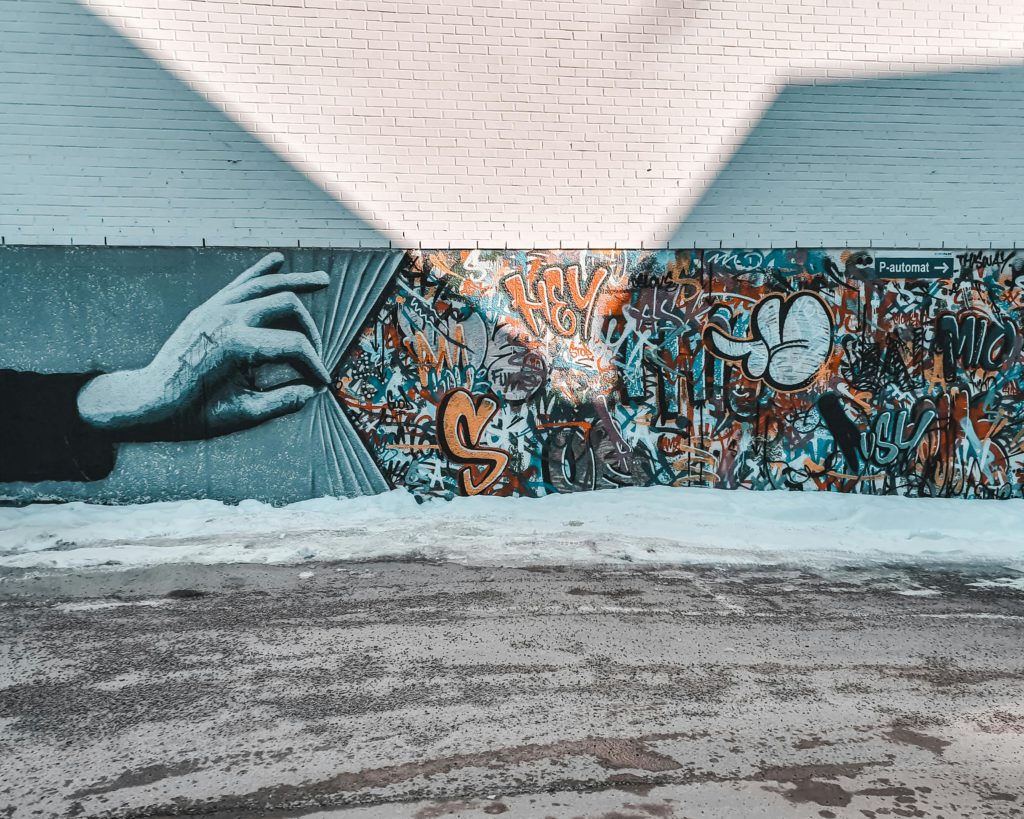Walking down the street, you’ll often notice, bright and bold pieces of art. Often, this artwork has been created using spray paints. But, believe it or not, it isn’t all graffiti. Some of it will be street murals that someone has paid for.

When we walk down the streets of our cities, we often encounter vibrant and colourful artworks adorning walls and buildings. Some may wonder: are these creations the work of street muralists or graffiti artists? While both forms of art share similarities, they have distinct differences in terms of intent, execution, and perception.
Street muralists
Street muralists are artists who create large-scale. Often commissioned artworks on public walls or surfaces. Their murals are typically created with the consent and support of property owners or community organisations. They are intended to enhance public spaces, beautify neighbourhoods, and convey positive messages.
One of the defining characteristics of street muralists is their focus on creating art that is accessible and inclusive. They often draw inspiration from local culture, history, and community values. Their murals may depict themes such as social justice, environmentalism, or cultural diversity. Street muralists use their art as a tool for communication and connection.
Therefore, aiming to spark conversation, evoke emotion, and foster a sense of pride and belonging within the community. In terms of technique, street muralists employ a variety of mediums, including paint, stencils, and digital projections, to create their artwork. They may work individually or collaborate with other artists, community members, or organisations.
Graffiti artists
Graffiti artists, on the other hand, are often associated with creating unauthorised artwork in public spaces. Sometimes without the permission of property owners. This type of art can range from simple tags and throw-ups to more elaborate pieces featuring intricate lettering, characters, and designs. Some find graffiti unpleasant to look at.
Unlike street muralists, graffiti artists may operate outside the boundaries of legality and may face legal consequences for their actions. Their art is often characterised by its rebellious and subversive nature, challenging societal norms and conventions. Graffiti artists may use pseudonyms or “tags” to maintain anonymity and evade detection by authorities.
While graffiti art has historically been viewed as a form of vandalism or property defacement, it has also gained recognition as a legitimate form of artistic expression. Some graffiti artists use their art to convey political messages, social commentary, or personal identity. Using public spaces as a canvas for self-expression and protest.
While both street muralists and graffiti artists create art in public spaces, they have distinct differences in terms of intent, execution, and perception. Street muralists create large-scale artworks with the consent and support of property owners. Often focusing on themes of community, inclusivity, and positivity.
Graffiti artists, on the other hand, may create unauthorised artworks with a more rebellious and subversive intent, challenging societal norms and conventions. Ultimately, whether we appreciate street murals or graffiti art, it’s important to recognise the artistic value. Both street muralists and graffiti artists contribute to the vibrancy and diversity of our urban landscapes.



